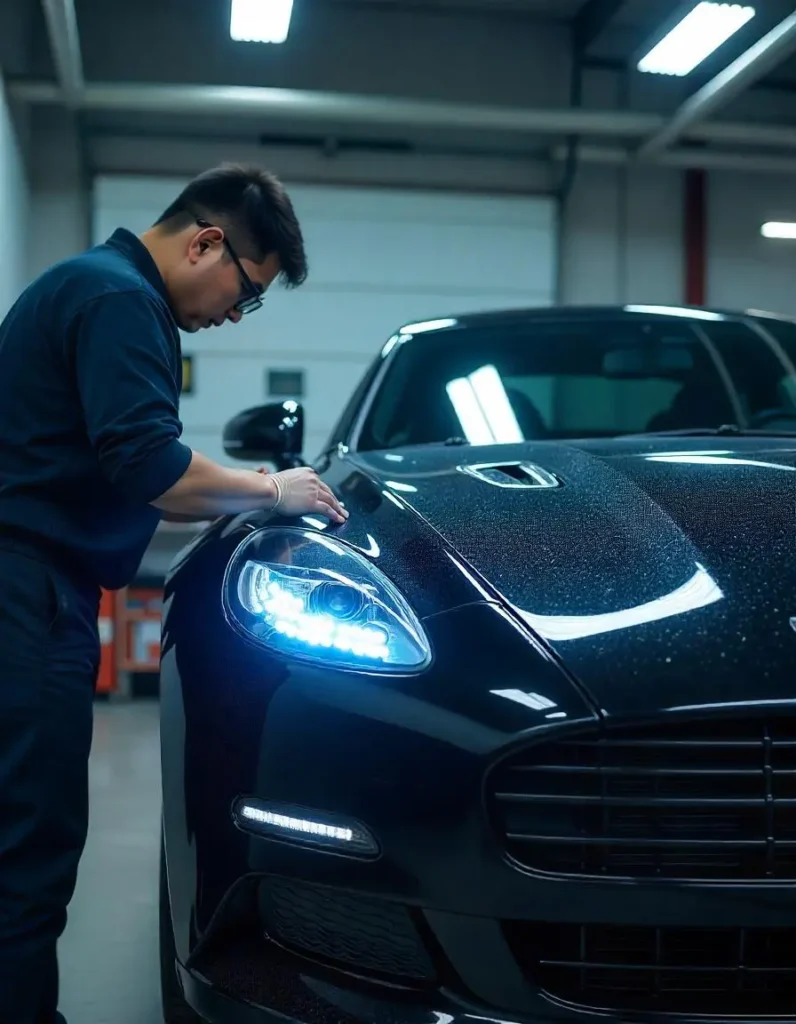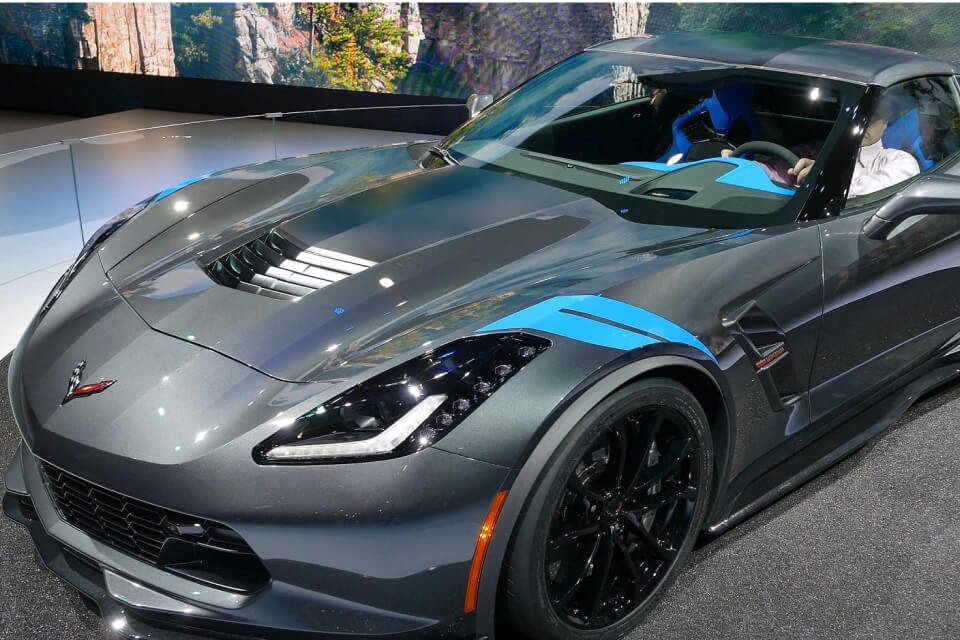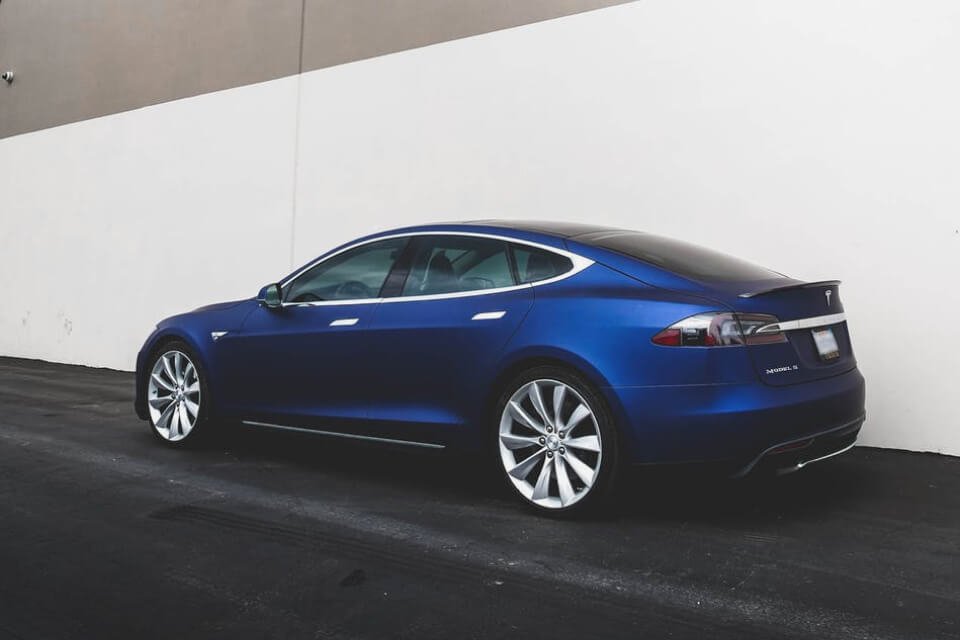When it comes to preserving the appearance and condition of your car, protecting its paint is essential. Two of the most advanced and popular solutions in the automotive world today are Graphene Coating and Paint Protection Film (PPF). These two technologies offer remarkable protection, but they do so in different ways. To help you make an informed decision, let’s dive into the features, benefits, and differences between these two methods of car paint protection.
What is Graphene Coating?
Graphene coating is a cutting-edge solution designed to protect a vehicle’s paint from the harsh elements of the road. This coating is a form of ceramic protection that incorporates graphene, a revolutionary material made from a single layer of carbon atoms arranged in a honeycomb lattice. Graphene coatings are typically applied as a liquid that bonds with the car’s paint to create a thin yet incredibly durable layer.
This layer forms a hydrophobic surface, meaning it repels water, dirt, and contaminants, which makes it easier to clean the vehicle. The graphene coating also enhances the paint’s scratch resistance and UV protection, preventing oxidation and fading. The result is a car that looks cleaner, shinier, and well-protected for a longer time.
What is Paint Protection Film (PPF)?
Paint Protection Film (PPF), also known as clear bra, is a transparent, adhesive film that is applied directly to the car’s paintwork. The film acts as a physical barrier that protects the paint from road debris, stone chips, scratches, and other potential damage. Modern PPFs are self-healing, which means that minor scratches and swirl marks disappear when exposed to heat, maintaining the film’s pristine appearance.
PPF is typically installed on high-impact areas of the car, such as the front bumper, hood, side mirrors, and fenders. It provides robust protection against physical damage, making it a popular choice for drivers who want to protect their vehicle from the hazards of the road.
Benefits of Graphene Coating
- Hydrophobic Properties: The hydrophobic nature of graphene coating makes it excellent at repelling water and contaminants. This property ensures that rain, mud, and road salt slide off the surface, keeping the car cleaner for longer and reducing the frequency of washing.
- Scratch and Swirl Resistance: Graphene coating bonds tightly to the paint, making the surface harder and more resistant to minor scratches and swirl marks that often occur from washing or everyday use.
- UV Protection: Graphene coatings offer UV protection, helping prevent the paint from fading or becoming oxidized over time due to prolonged exposure to the sun.
- Enhanced Aesthetics: One of the most noticeable benefits of graphene coatings is how it enhances the vehicle’s appearance. It adds a glossy, shiny finish to the paint, making it look new and vibrant.
- Long-lasting: Once applied, graphene coatings can last between 2 to 5 years with proper care, providing long-term protection for your car’s paint.
Benefits of Paint Protection Film (PPF)
- Physical Protection: PPF offers superior physical protection compared to graphene coatings. It acts as a shield against stone chips, road debris, scratches, and abrasions. PPF can withstand the impact of flying rocks, gravel, or other road hazards that could damage the paint.
- Self-Healing Properties: Many modern PPFs come with a self-healing feature, which allows minor scratches or swirl marks to disappear when exposed to heat, restoring the film’s smooth surface.
- UV Protection: Like graphene coatings, PPF also provides protection from UV rays, which helps prevent the paint from fading and keeps the car looking newer for a longer period.
- Preserves Paint’s Integrity: Since PPF is a physical barrier, it prevents damage to the paint, ensuring that the underlying surface remains intact. This makes it ideal for areas that are more susceptible to damage, such as the front bumper, side skirts, or hood.
- Durability: PPF is incredibly durable and can last anywhere from 5 to 10 years, depending on the quality of the film and how well it is maintained. This longevity makes it a worthwhile investment for drivers who want long-term protection.
Graphene Coating vs. PPF: A Direct Comparison
Protection Type
Graphene coatings and PPF protect in different ways. Graphene coatings provide chemical protection by creating a hydrophobic surface that repels contaminants. While it does offer some scratch resistance, it doesn’t protect against physical damage such as rock chips or deep scratches.
On the other hand, PPF is specifically designed to protect against physical damage by acting as a barrier that absorbs impacts from road debris. It is excellent at preventing stone chips and other physical abrasions that can damage the paint.
Aesthetic Impact
Graphene coatings enhance the vehicle’s appearance, adding a glossy, high-shine finish that boosts the paint’s depth. Since it’s applied as a thin liquid layer, the overall appearance of the car remains largely unchanged, except for the added shine and smoothness.
PPF, while transparent, may slightly alter the finish of the car depending on the quality and thickness of the film. Some high-quality PPFs offer a glossy finish that enhances the appearance, but there may be noticeable edges or seams, especially if the film doesn’t cover the entire vehicle.
Maintenance
Both graphene coatings and PPF are relatively low-maintenance compared to traditional waxing methods. Graphene coatings are easy to clean because of their hydrophobic nature, which causes water and dirt to slide off the surface.
PPF, however, requires more maintenance to preserve its integrity. The film must be kept free from contaminants and should be cleaned with gentle products to avoid damaging the film. Over time, PPF can also degrade, leading to discoloration or yellowing, especially in areas exposed to high heat.
Cost
Both solutions can be expensive, but the cost of PPF tends to be higher due to the labor-intensive installation process. The cost varies depending on the quality of the film and the areas you want to cover. A full-car PPF installation can be a significant investment.
Graphene coatings, while still requiring professional application for the best results, tend to be less expensive than PPF. The price depends on the product and the vehicle’s size, but overall, graphene coatings provide a more cost-effective solution for those looking for long-term protection.
Which is Better for You?
The choice between graphene coating and PPF depends on your specific needs:
- If you’re looking for physical protection against chips, scratches, and abrasions, PPF is the superior choice.
- If your focus is on chemical protection, enhanced hydrophobic properties, and easier cleaning, graphene coating might be the better option.
- For those who want the best of both worlds, combining both graphene coating on the whole vehicle and PPF on high-impact areas like the hood and bumper provides comprehensive protection against both environmental contaminants and physical damage.
Conclusion
In the battle between graphene coating and PPF, there is no clear-cut winner as each option provides a unique set of benefits. Understanding your priorities—whether it’s physical damage protection, easy maintenance, or long-term aesthetics—will guide you toward the best solution for your vehicle. Whether you choose graphene coating, PPF, or both, investing in paint protection is an excellent way to preserve your car’s appearance for years to come.



